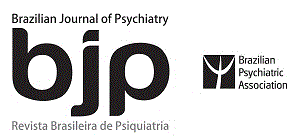Resumo em Inglês:
Objective: The advancement of neuroimaging and genetic research has revealed the presence of morphological abnormalities and numerous risk genes, along with their associations. We aimed to estimate magnetic resonance imaging-derived cortical thickness across multiple brain regions. Methods: The cortical thickness of 129 schizophrenia patients, 42 of their unaffected siblings, and 112 healthy controls was measured and the candidate genes were sequenced. Comparisons were made of cortical thickness (including 68 regions of the Desikan-Killiany Atlas) and genetic variants (in 108 risk genes for schizophrenia) among the three groups, and correlation analyses were performed regarding cortical thickness, clinical symptoms, cognitive tests (such as the N-back task and the logical memory test), and genetic variants. Results: Schizophrenia patients had significantly thinner bilateral frontal, temporal, and parietal gyri than healthy controls and unaffected siblings. Association analyses in target genes showed that four single nucleotide variants (SNVs) were significantly associated with schizophrenia, including thioredoxin-related transmembrane protein 2-catenin, cadherin-associated protein, delta 1 (SNV20673) (positive false discovery rate [PFDR] = 0.008) and centromere protein M (rs35542507, rs41277477, rs73165153) (PFDR = 0.030). Additionally, cortical thickness in the right pars triangularis was lower in carriers of the SNV20673 variant than in non-carriers (PFDR = 0.048). Finally, a positive correlation was found between right pars triangularis cortical thickness and logical memory in schizophrenia patients (r = 0.199, p = 0.032). Conclusions: This study identified regional morphological abnormalities in schizophrenia, including the right homologue of Broca’s area, which was associated with a risk variant that affected delta-1 catenin and logical memory. These findings suggest a potential association between candidate gene loci, cortical thickness, and schizophrenia.
